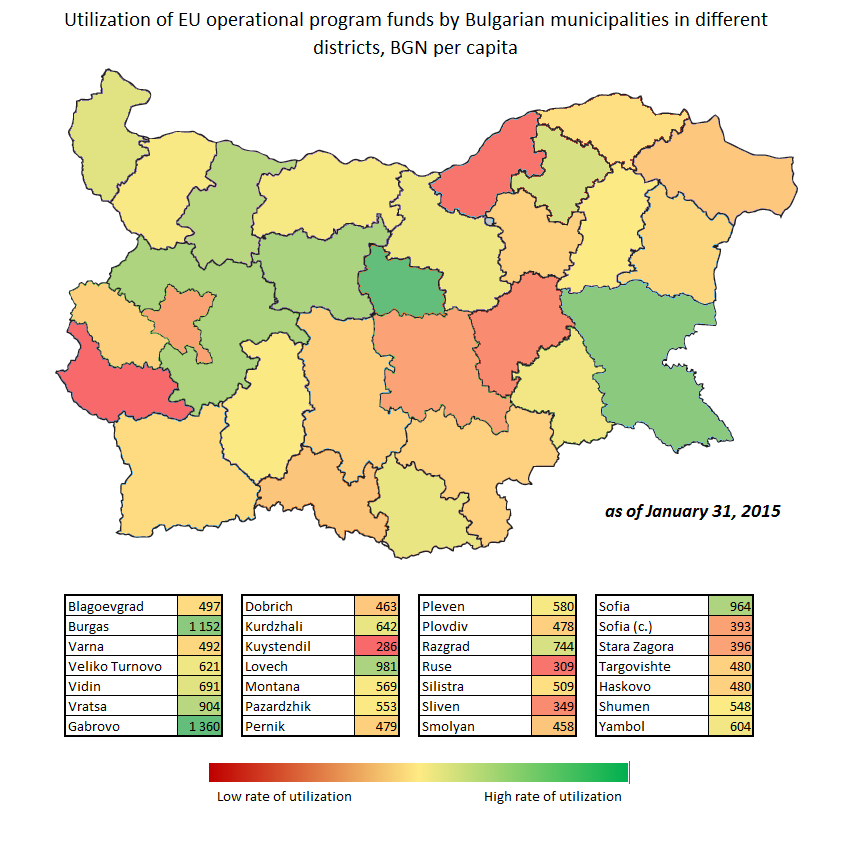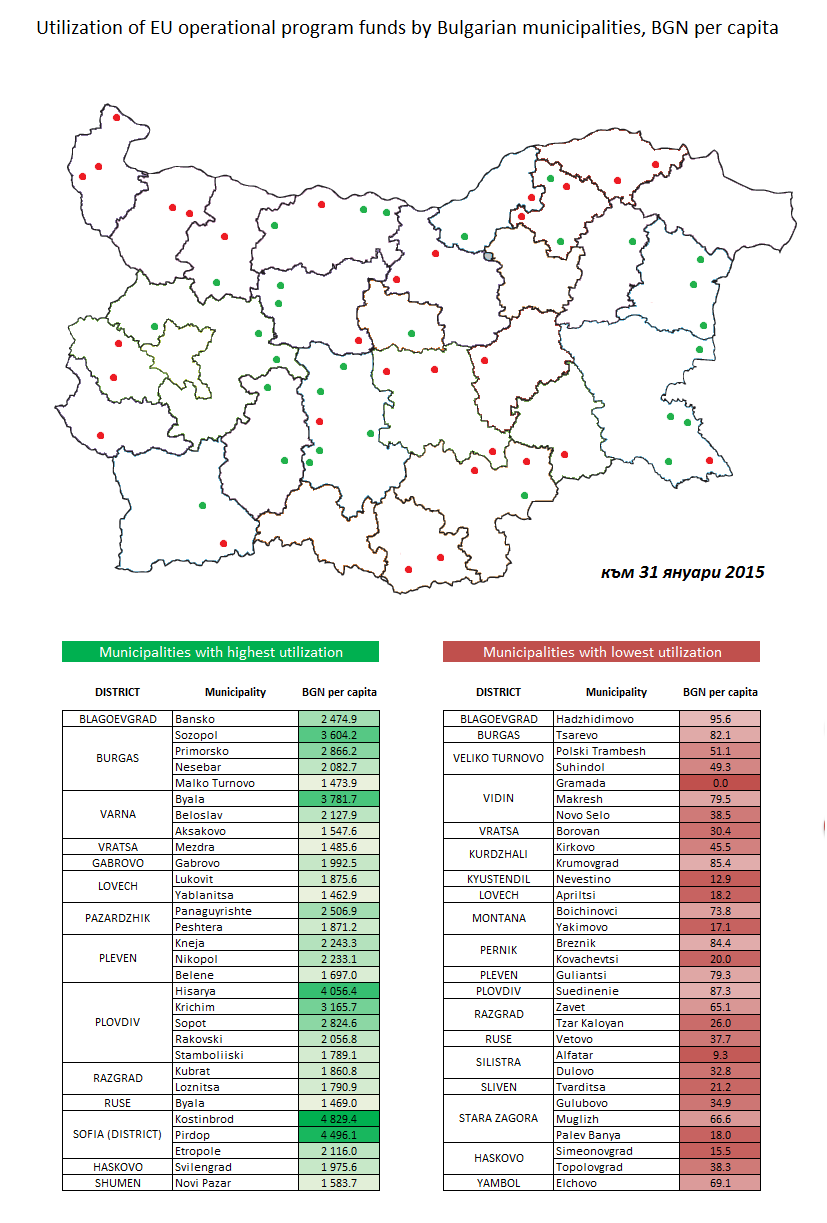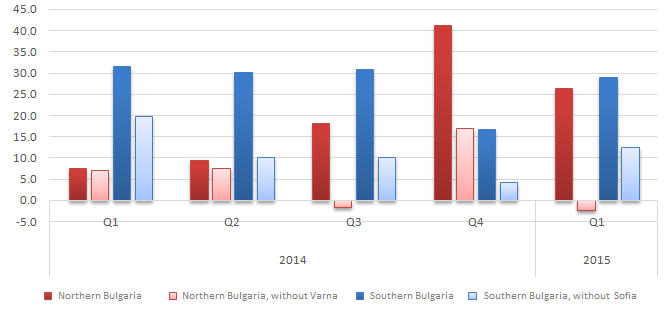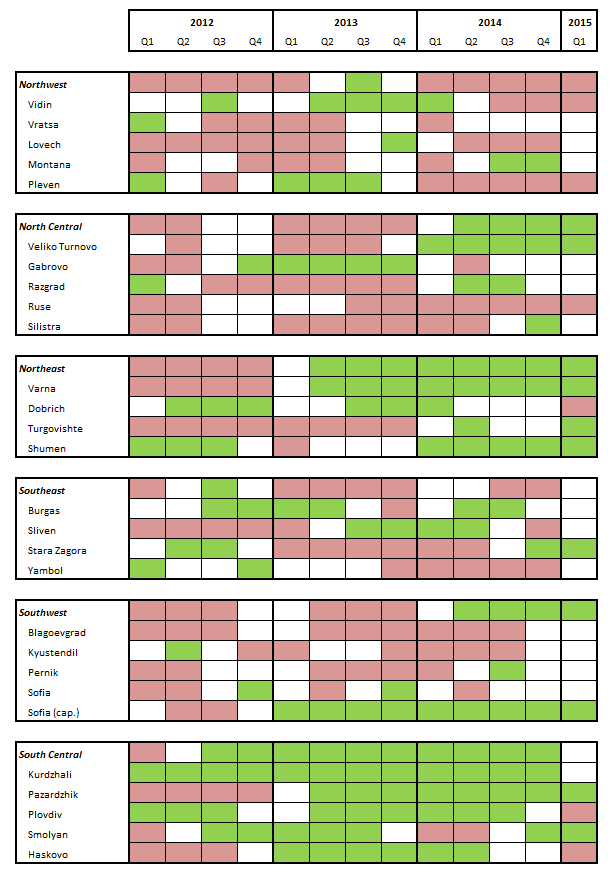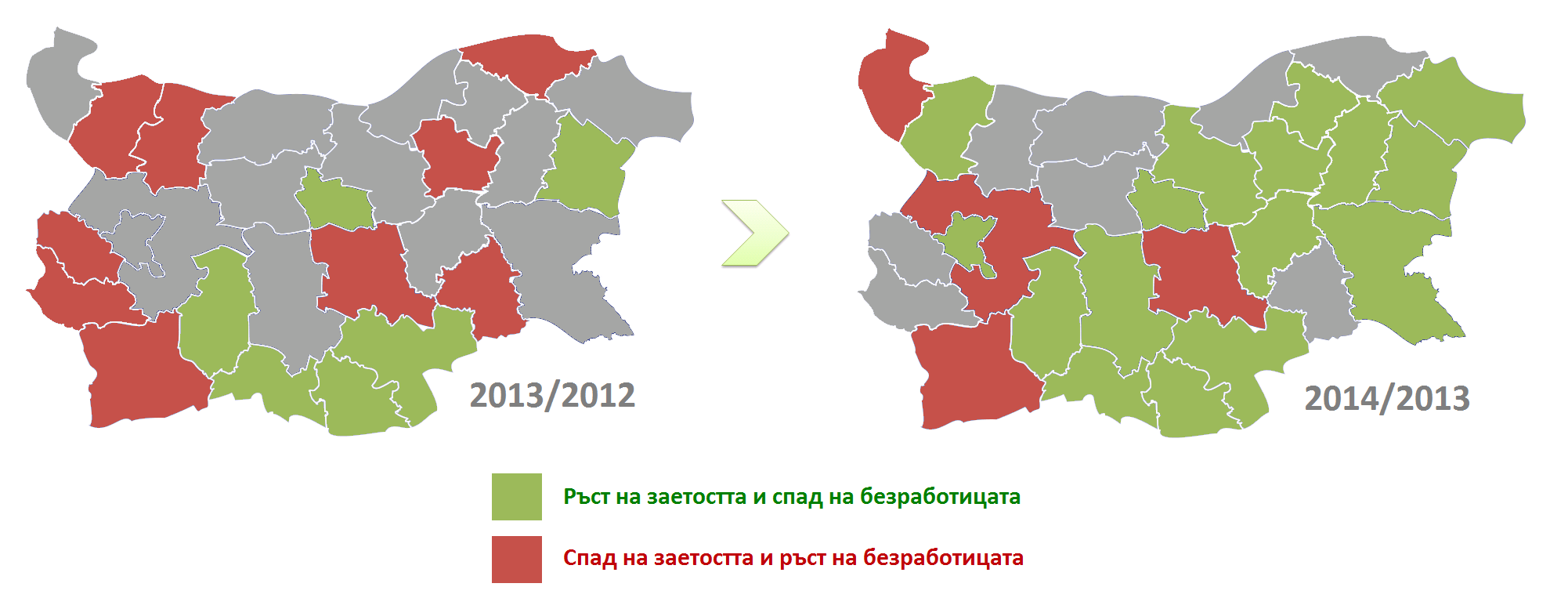Effectiveness of Local Level Control and Regulatory Activities
Efficiency and Success Rate of Local Control Mechanisms
The quality of life in a society to a large extent depends on the ability of the local administration to effectively enforce the rules and laws in the particular country. Even good policies have no effect if they cannot be efficiently enforced.
One of the ways to measure the effectiveness of local administrations in their task of enforcing the law and regulations, is to evaluate the results (how many) and effectiveness (at what cost) of the collection of penalties and property fines enforced by municipal administrations.
The conducted analysis of the funds collected by municipal administrations in this manner shows that:
- In 2014 five municipal administrations have registered an income from penalties and property fines ten times higher than the value of those actually enforced. This extra income probably came from fines already enforced in a prior period and maybe also due to a reorganization of their operations. These municipalities are Zavet, Plovdiv – central region, Vidin, Simeonovgrad and Nova Zagora.
- Another 19 municipal administrations have also collected fines which were enforced in a prior period, but in a smaller size than the previous group, but even so they reach a collection rate of over 100%. These are mainly small municipalities like for example Zlatograd, Aksakovo, Tutrakan and etc., but there are also some bigger ones like Ruse and Varna.
- A much bigger group of municipalities (a total of 60) reach a collection rate of enforced fines between 80% and 100% - in this group areKardzhali, Panagyurishte, Plovdiv – Northern and Western region, Razlog, Dulgopol, Velingrad and others.
- The biggest number of municipalities (72) have a collection rate between 50% and 80% - some of the biggest municipalities are in this group – Blagoevgrad, Pleven, Veliko Tarnovo, Dobrich, Pazardjik, Shumen, Yambol and others.
- The group of municipalities with a low collection rate (between 10% and 50%) is formed by 64 administrations, including Sofia, Burgas, Targovishte, Asenovgrad, Svilengrad and the capital regions of Izgrev, Oborishte, Poduene, Mladost and Triaditsa.
- 23 municipalities have an even worse collection rate of between 1% and 10% , this group includes Stara Zagora, Sozopol, Silistra, the capital regions of Studentski, KrasnoSelo, Ilinden, Serdika and Iskar, Kustendil and Botevgrad.
- 17 municipalities have registered no income from collected fines, the biggest ones being Lulin, Novi Iskar, OvchaKupel, Vrabnitsa, Hisaria and others.
The data shows that the big municipalities, where most of the population is concentrated, have a very bad record in terms of their regulatory functions, which has an effect on the incentive to abide by regulations and consequently – on the quality of life of local inhabitants. According to various data, about 25% of total enforced sanctions are either appealed in court or simply retracted, but despite this, the size of enforced fines which are not collected remains quite significant, which shows that a large number of offenders remain unpunished for breaking the rules.
The lack of effective control for enforcing local regulations means that even if there is an inflow of investment and a quality infrastructure and even transfers from the central budged towards particular local projects, the big municipalities fail at providing living and business conditions which are good enough.
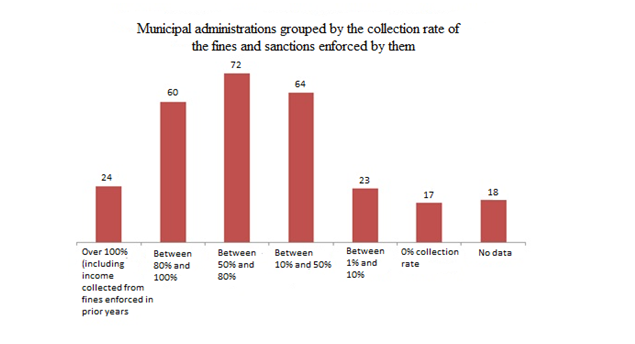
Source: IME, based on the state and local administration’s official reports for 2014
The top 5 municipalities with the biggest absolute sums effectively collected from fines and penalties in 2014 are Plovdiv, Sofia, Varna, Burgas and Aksakovo. These, however, are also municipalities with a low collection rate (except for Varna), i.e. they have collected only 50% of the total size of the sanctions they have enforced.
The most efficient municipalities (sum collected per employee) are Samokov, GotseDelchev, Tutrakan, Simeonovgrad and Shabla.
|
Municipal administrations |
Number of personnel with the authority to enforce bills for regulation violations |
Total property sanctions collected in 2014 (lv.) |
Total property sanctions enforced in 2014 (lv.) |
Sanctions enforced per one administratve official |
Ratio of sanctions collected to sanctions enforced |
Sanctions collected per one administrative official |
|
Plovdiv |
227 |
711 687 |
1 359 526 |
5 989 |
52% |
3 135 |
|
Sofia |
372 |
471 515 |
1 359 245 |
3 654 |
35% |
1 268 |
|
Burgas |
74 |
299 301 |
687 043 |
9 284 |
44% |
4 045 |
|
Varna |
117 |
309 889 |
304 349 |
2 601 |
102% |
2 649 |
|
Stara Zagora |
26 |
10 664 |
165 914 |
6 381 |
6% |
410 |
|
Dobrich |
32 |
88 598 |
126 650 |
3 958 |
70% |
2 769 |
|
Blagoevgrad |
28 |
65 343 |
110 540 |
3 948 |
59% |
2 334 |
|
Pleven |
67 |
47 344 |
79 355 |
1 184 |
60% |
707 |
|
Sliven |
20 |
12 260 |
77 770 |
3 889 |
16% |
613 |
|
Veliko Tarnovo |
21 |
36 440 |
60 055 |
2 860 |
61% |
1 735 |
|
Shumen |
25 |
42 446 |
57 500 |
2 300 |
74% |
1 698 |
Source: IME, based on the state and local administration’s official reports for 2014
